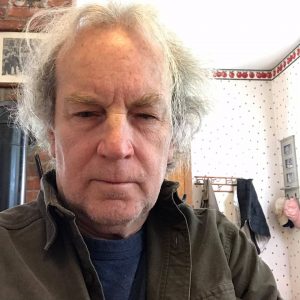This project’s got it all. To build a Wal-Mart superstore on the east side of Jefferson City, Missouri, Wal-Mart needs the “show me” state to show them every incentive in the book. The land the giant retailer wants first needs to be annexed. It then needs to be rezoned. The shoppers who use the store will get hit with an special tax to pay for infrastructure, and landowners near the site have to forcibly give up their land to pave a road to the store. Just about everything’s wrong with this picture, but local officials in Jefferson City seem unfazed by the prospect. This so-called “Eastside” Wal-Mart will be 204,000s.f., the size of 4 football fields glued together, located just a few miles from the existing Westside Wal-Mart in Jefferson City on Stadium Boulevard, the city is being told how unique this store will be, painted a palette of “neutral hues” like “Trusty Tan,” “Renwick Rose Beige,” and “Nobility Blue.” The story will have a “row of ornamental trees” around the parking lot, “stamped concrete pedestrian walkways” and, how unusual — “a large pylon sign.” To make all this beauty reality, the city is creating a Transportation Development District (TDD) to pay for an access ramp off the higheway at City View Drive. The TDD will levy on shoppers a one cent tax per every $1 spent in the district. The tax is
imposed by consent of the property owners, and would be assessed over a number of years until the bonds are paid off. Wal-Mart apparently can’t afford to do this roadwork itself, so local shoppers will pay literally to pave a road to Wal-Mart’s front door. In addition, the City Council also has to approve the voluntary annexation of 40 acres of land, rezone a portion of the land from rural to commercial, and grant a special use permit to build such a large store, because City statute requires a special permit for any store in excess of 100,000 s.f. — and this one is twice that threshold. As topping on the cake, the city has to obtain nearly 7 acres of land from farmer Stephen LePage. The city can either buy the land from LePage, or take it by eminent domain. LePage’s land is needed to provide an access road to the superstore. The LePage family has a 60-foot-wide easement across the proposed big box site. The family uses that easement to move
agricultural equipment around the farm. LePage wants to keep a 60 foot easement, and has complained to city officials that someone has to pay relocating major gas lines that cross the area. He also pointed out that the TDD zone was just a way for the developers to get off having to bear the full cost of their project. “It will be paid for by the customers,” he said. “Wal-Mart reports profits of nearly $28 million a day. And they’re building this store at no cost. It’s ridiculous,” he told the newspaper. Two public hearings will be held on May 11 and 15th to hear public comment. Mayor John Landwehr is all for this project, complete with eminent domain and corporate welfare. He just wants to get a new road interchange built, and taxing shoppers seems like a good way to get it done. And Wal-Mart is as proud as a dog on a hydrant. “We’re looking forward to serving more customers on the east side of Jefferson City,” a company spokesman said. “We want to work with the mayor and the council to ensure the store is representative of the community.” Whatever that means.
East side, west side, all around the town. Jefferson will be saturated with big box stores, and smaller merchants will continue to lose market share and die. This case is so emblematic of all the wrong ingredients. The land is not zoned correctly, it’s not even in the city. A farmer has to give up his land involuntarily to make it work, and Wal-Mart is given special permits and tax breaks that smaller retailers would never get. Public subsidies for the largest retailer in the world. It defies logic, especially for a project that brings no added value economically to Jefferson, which already has its Westside store. Missouri is one of the leading states with empty Wal-Mart stores, and this story from Jefferson sums up the empty process that creates another roadside piece of sprawl.


